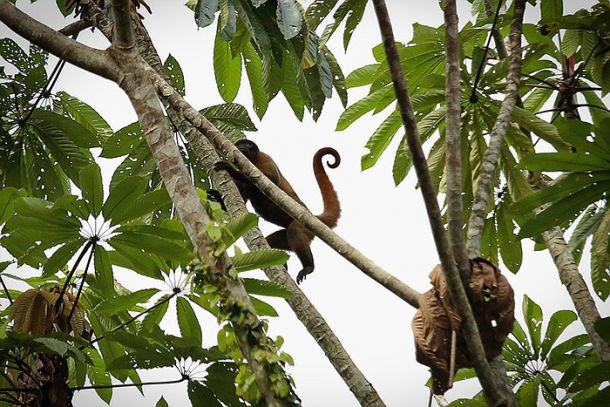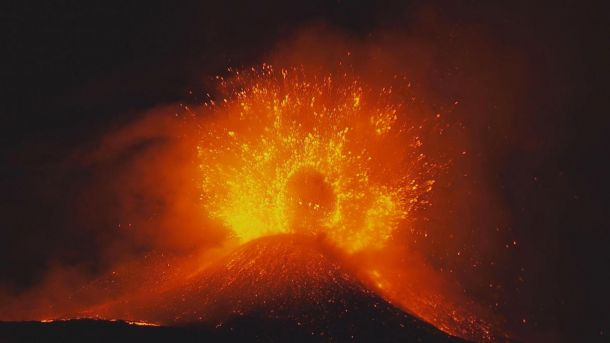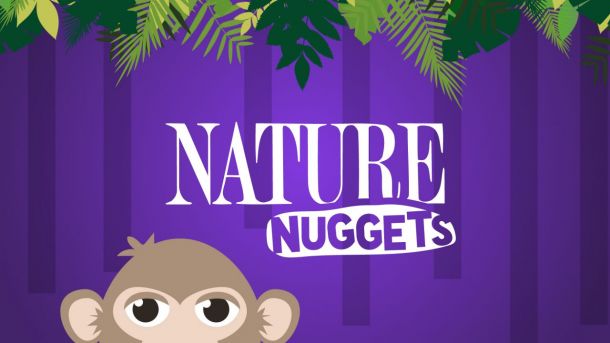Looking for inspiration, boredom-relief, or lesson plans to keep kids busy? Here are some PBS NATURE resources for children of all ages.
You can also find a roundup of citizen science projects to do at home HERE.
And from PBS KIDS For Parents: How to Talk to Your Kids About Coronavirus and Back to School Resources
Streaming Episodes | Rated G:
Enjoy kid-friendly NATURE episodes streaming on our website, pbs.org, and the PBS Video app.
Yosemite (Rated G)
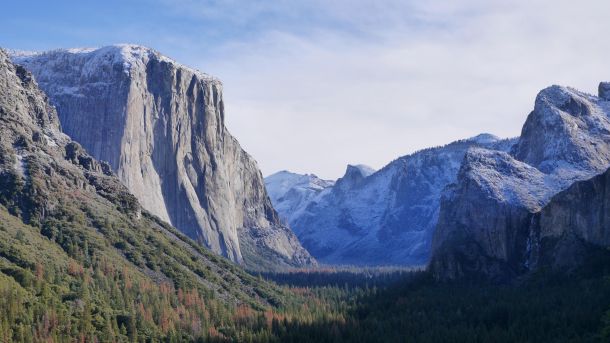
The Sierra Nevada, a mountain range running about 400 miles along the eastern side of California and stretches into Nevada, is home to three national parks: Sequoia, Kings Canyon and Yosemite. This is a land of giants, whether speaking of trees soaring to nearly 300 feet or massive stone monoliths far taller than any skyscraper. But the force that has given rise to the earth’s largest living trees and carved out the iconic natural landmarks of the Sierras is water. The role that water has played in the creation and evolution of Yosemite Valley cannot be overstated – feeding its numerous wild rivers and countless waterfalls, and making life in this stone wilderness possible. The second force, crucial to the Giant sequoias’ ability to reproduce, is fire. It is the delicate balance of these two elements, water and fire, that is vital to the continued existence of the wildlife and trees that inhabit the Sierras.
Despite the recent heavy rains and snowfall, scientists are finding that water is scarcer and the threat of fire is more likely as the area continues to experience rising temperatures upsetting that important balance. Geologists, ecologists, researchers and adventurers investigate how the changing climate is affecting one of America’s greatest wildernesses. Click HERE to watch.
Video Lesson for Grades 5-12: Climate Change is Shrinking the Sierra Nevada Snowpack
Equus “Story of the Horse” | Episode 1: Origins (Rated G)
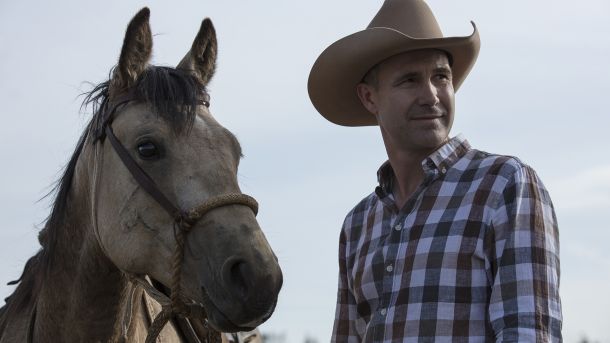
Explore the fascinating evolutionary journey of the horse, from its tiny forest-dwelling ancestor called the Dawn Horse to the modern steed. Encounter scientists unlocking the genetic basis of horsepower and decoding their emotional intelligence. Click HERE to watch.
Video Lesson for Grades K-4: How Horses Read Our Expressions
Equus “Story of the Horse” | Episode 2: Chasing the Wind (Rated PG)
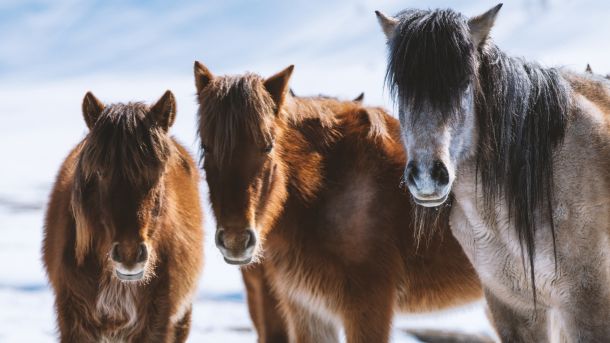
Discover how humans have partnered with the horse throughout the centuries, creating more than 350 breeds found all around the world. Click HERE to watch.
Video Lesson for Grades 5-12: Maintaining Traditions: The Blackfoot Confederacy and Their Horses
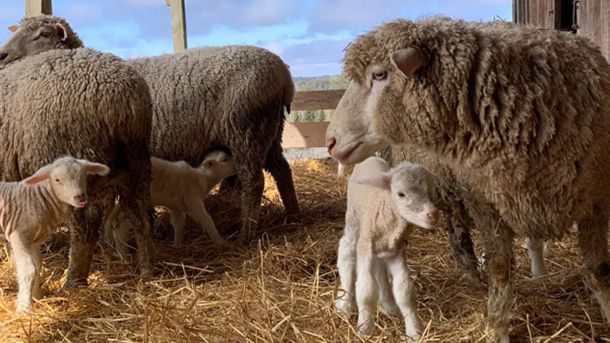
Tracing the green wave that sweeps across the continent in spring, see how the rising temperatures and longer days spur plants to awaken and flower, and animals to seek out newly abundant resources for their new families. See bears emerge from hibernation in Maryland and witness the connection that nesting birds have with alligators in the Everglades. Go nest hunting in Arizona and learn how the California wildlands are being reborn after a year of devastating wildfires. Discover how animals have incorporated seasonal change into their life cycles and successful reproductive strategies – all demonstrated by the birth of a lamb in Maine. Click HERE to watch.
American Spring LIVE Video Lesson Collection for Grades K-12: Citizen Science for Your Classroom
American Spring LIVE: Episode 2: Migrations (Rated G)
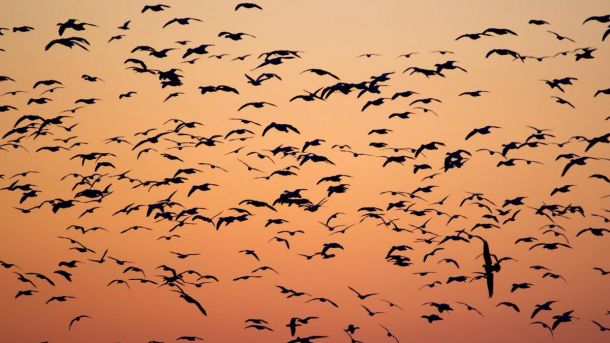
Breeding and the greening of the landscape are tied to another major spectacle of spring: the mass movements of animals as they take advantage of spring’s bounty. Meet the scientists who track the journeys of animals such as butterflies, birds, bison and bats over vast distances, from winter refuge to spring nesting grounds. As they attempt to uncover the precise triggers and timing of migration and its impact on other animal species, the scientists grapple with how these patterns and behaviors may shift due to climate change. Click HERE to watch.
American Spring LIVE Video Lesson Collection for Grades K-12: Citizen Science for Your Classroom
American Spring LIVE: Episode 3: Connections (Rated G)
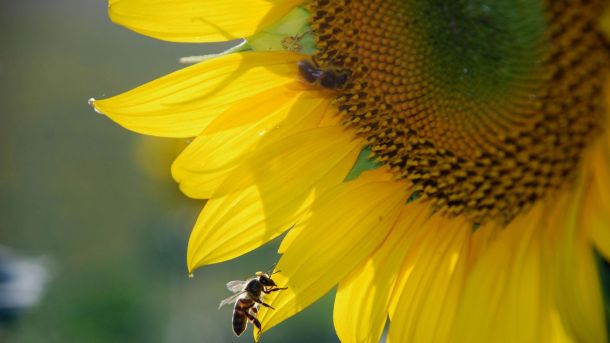
Nature’s perfect partnerships, precisely synchronized, have evolved over thousands of years. Learn how plants and animals depend on each other to survive. See first-hand how climate change can break those connections, altering the timing of weather and plant growth, and disrupting the delicate relationships between plants and pollinators such as moths, bees and butterflies. Watch a family of wolf cubs explore their den in Minnesota’s Voyageurs National Park and learn about their vital connection with the park’s ecosystem. Plus, see how bobcats in California hunt for mice and other small prey. Click HERE to watch.
American Spring LIVE Video Lesson Collection for Grades K-12: Citizen Science for Your Classroom
Streaming Episodes | Rated PG:
Enjoy family-friendly NATURE episodes streaming on our website, pbs.org, and the PBS Video app.
The Serengeti Rules (Rated PG)

Travel back in time, from the Arctic Ocean to Pacific tide pools, with a pioneering group of scientists who make surprising discoveries that transform human understanding of nature and ecology. Based on a book of the same name, The Serengeti Rules had its theatrical premiere at Tribeca Film Festival and has won awards at the 2018 Wildscreen Panda Awards and Jackson Hole Science Media Awards. Click HERE to watch.
Grades 6-12: Multimedia Lesson Collection
Undercover in the Jungle (Rated PG)
Go undercover with a film crew on a perilous journey to the untouched wilderness of biodiversity in the Amazon rainforest. Meet some of the most incredible creatures, from pygmy marmosets to pumas, as the wild secrets of the jungle are revealed. Click HERE to watch.
Video Lesson for Grades 3-8: Field Research with Cameras
Okavango: River of Dreams – Episode 1: Paradise (Rated PG)
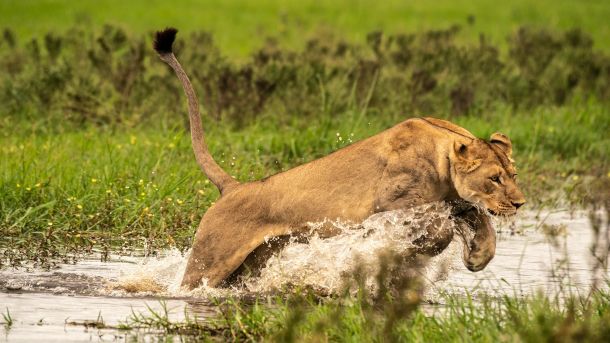
Explore the landscape and wildlife of the Upper Okavango River, where the deep water shows elephants swimming and carving channels through the reeds and papyrus, setting small birds afloat to drift past hippos and crocodiles. A lioness severely injured by a buffalo is left for dead by her pride. Now disabled, she must survive in the swamp alone, hunting to feed her little cubs. Click HERE to watch.
Video Lesson for Grades 4-8: Big Feet and Buoyancy
Okavango: River of Dreams – Episode 2: Limbo (Rated PG)
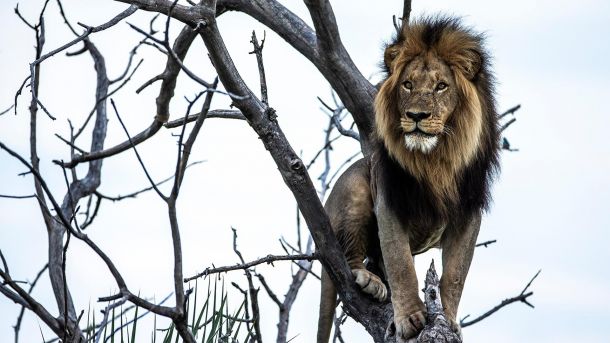
Delve into the landscape and wildlife of the “Middle World,” the delta of the Okavango River. In the most dynamic and lively part of the river, long caravans of elephants travel along the water, and Pied kingfishers hover before diving in for fish and frogs. Hyena and warthog families share neighboring dens, helping each other by keeping an eye on threatening predators. Click HERE to watch.
Video Lesson for Grades 3-8: Interconnections in the Okavango River Delta
Okavango: River of Dreams – Episode 3: Inferno (Rated PG)
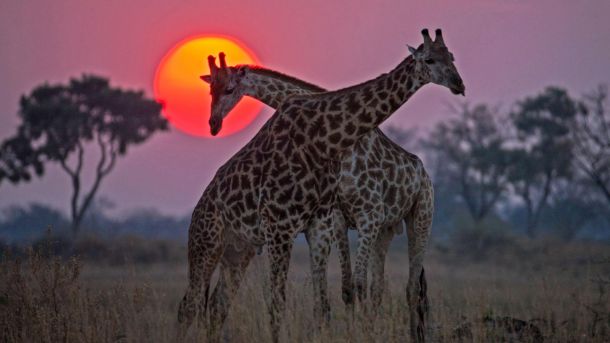
Discover the landscape and wildlife of the Lower Okavango River, where the land is baked dry by the scorching sun of the Kalahari Desert and animals must adapt to the extreme environment. Click HERE to watch.
Video Lesson for Grades 3-8: Nest Thieves
Forest of the Lynx (Rated PG)
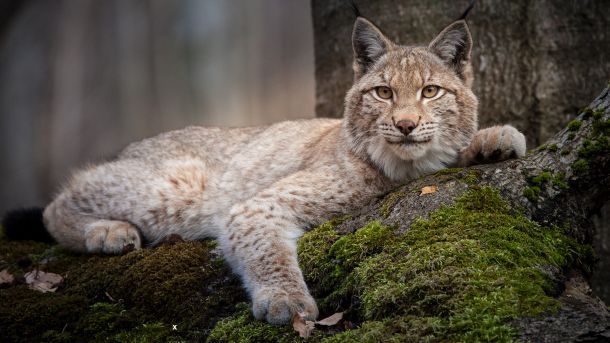
Austria’s Kalkalpen National Park is the largest tract of wilderness in the Alps, but it wasn’t always that way. The park was once the site of major logging and mining operations, but those activities ceased more than two decades ago. Three years in the making, Forest of the Lynx chronicles life in this remote wilderness and the complex partnerships among plants, insects, animals and trees. Click HERE to watch.
Video Lesson for Grades 5-12: Ecological Antagonists and Partners: Trees, Beetles and Woodpeckers
The Story of Cats: Asia to Africa (Rated PG)
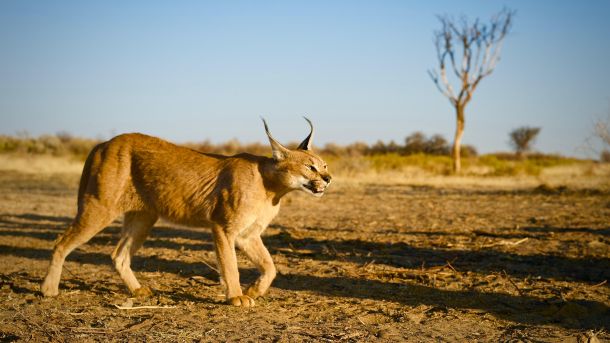
In the first episode, we discover how the first cats arose in the forests of Asia, how they spread across the continent, and later came to conquer Africa. We reveal how they evolved flexible limbs to climb, giant bodies to survive in the cold, and super senses to catch prey. Ultimately we discover how becoming social made the lion, king of the savannah. Click HERE to watch.
Video Lesson for Grades 6-12: Animal Adaptations: Jaguar Jaws
Discover how cats first crossed from Asia into North America and how they went on to become the top predators of the continent. Today there are 13 feline species in the Americas – from the mighty jaguar, to the urban mountain lion, to the curious ocelot and from the Canada lynx to the nimble margay. The story of how all these cats came to be is an epic tapestry of pioneering spirit, powerful natural forces, and a battle for supremacy with their age-old rivals, the Canids. Then a few brave wildcats moved into our villages in pursuit of the hungry mice that followed the farmers’ grain. There are now more than 40 different breeds of domestic cat – from the exotic Siamese cat to the hairless Sphynx – who are still evolving. Click HERE to watch.
Video Lesson for Grades 6-12: Coevolution: Cheetahs and Pronghorns
Super Hummingbirds (Rated PG)
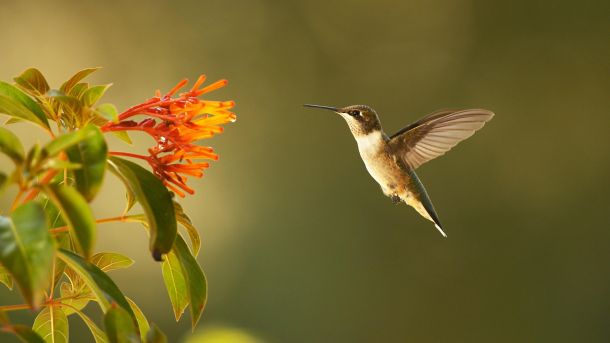
Hummingbirds are amazing creatures to behold. They are the tiniest of birds, yet possess natural born super powers that enable them to fly backwards, upside-down, and float in mid-air. Their wings beat faster than the eye can see and the speed at which they travel makes people wonder if it was indeed a hummingbird they actually saw. They also are only found in the Americas. These attributes have both intrigued scientists and made it challenging to study the species, but with the latest high-speed cameras and other technologies, Super Hummingbirds reveals new scientific breakthroughs about these magical birds. Click HERE to watch.
Video Lesson for Grades 6-8: Structure and Function: Hummingbird Tongue
Fox Tales (Rated PG)
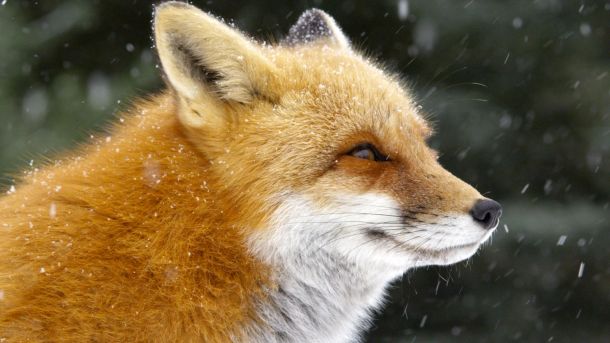
Intelligent, resilient and bold, the Red fox can change its behavior to thrive in new environments, from urban locales to the Arctic tundra. Fox Tales reveals new scientific research that offers a fascinating look into the secret life of red foxes. Click HERE to watch.
Video Lesson for Grades 6-12:Urban Foxes: Exploring New Ecosystems
Dogs in the Land of Lions (Rated PG)
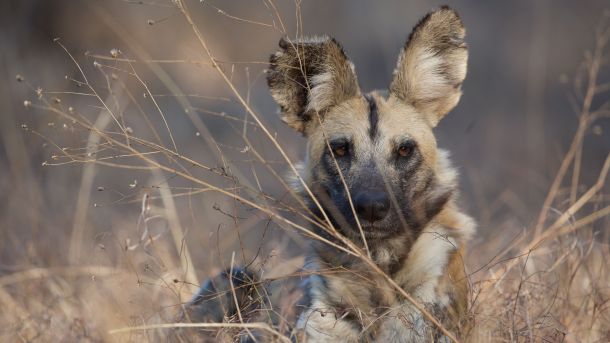
Follow the unforgettable journey of a close-knit family of wild dogs in Zimbabwe and witness rarely-seen behavior, from tender moments with newborn pups to the thrills of hunting wildebeest, to close encounters with their greatest enemy – the lion. Click HERE to watch.
Video Lesson for Grades 6-12: Competition between African Wild Dogs and Lions
Uncover the variety of activity, both human and natural, that occurs on the slopes of active volcanoes. Take a terrifying descent into the crater of one of the world’s most dangerous volcanoes alive today. Click HERE to watch.
Video Lesson for Grades 6-12:Exploring Volcanic Eruptions
Extras:
Nature Nuggets
Nature Nuggets are short, minute-long videos drawn from NATURE, one of the most watched documentary film series on public television. Nature Nuggets began as a new pilot campaign by WNET’s Education Department to test text-based technology as an effective community engagement technique. For this purpose, the minute-long videos from the NATURE series were repackaged for early learners (ages 2 to 6) and promoted as a tool for active science and language learning opportunities to parents, educators and caregivers across the nation. Nature Nuggets videos are also available on the Nature on PBS YouTube page.
One Hour in Snowy Yellowstone
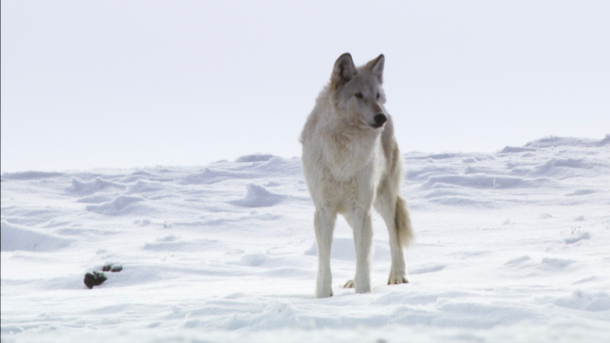
Perfect to leave on in the background, our Sights and Sounds series transports you to Yellowstone National Park. Sit back, relax, and experience the animals, landscapes, and awe of Yellowstone in winter. Click HERE to watch.
PBS KIDS Series
Natural history shows for kids from the brand you trust most. You can also find these programs on the PBS KIDS apps.
Wild Kratts
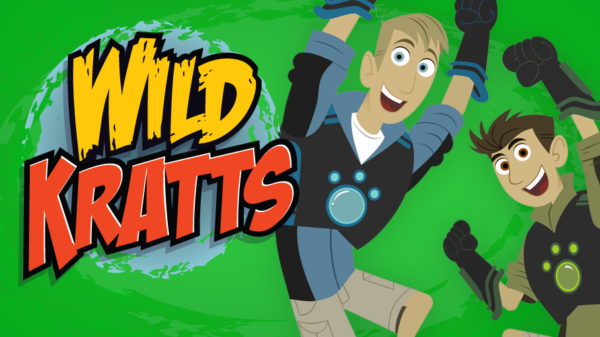
Join the adventures of Chris and Martin Kratt as they encounter incredible wild animals, combining science education with fun and adventure, while traveling to animal habitats around the globe. Each adventure explores an age-appropriate science concept central to an animal’s life and showcases a never-before-seen wildlife moment.
Nature Cat
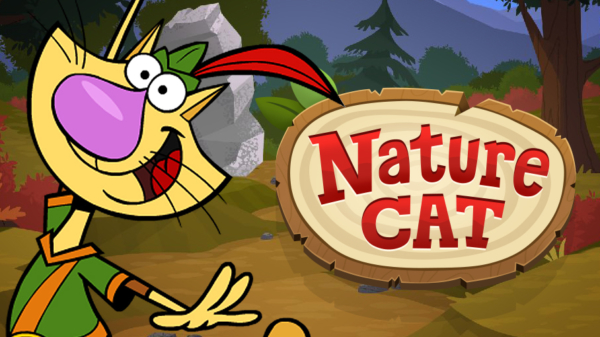
The show follows Fred, a house cat who dreams of exploring the great outdoors. Once his family leaves for the day, Fred transforms into NATURE CAT, “backyard explorer extraordinaire!” Nature Cat can’t wait to get outside for a day of backyard nature excursions and bravery, but there’s one problem: he’s still a house cat with no instincts for nature! With the help of his animal friends, Nature Cat embarks on action-packed adventures full of nature investigation, “aha” discovery moments and humor.
Let’s Go Luna!
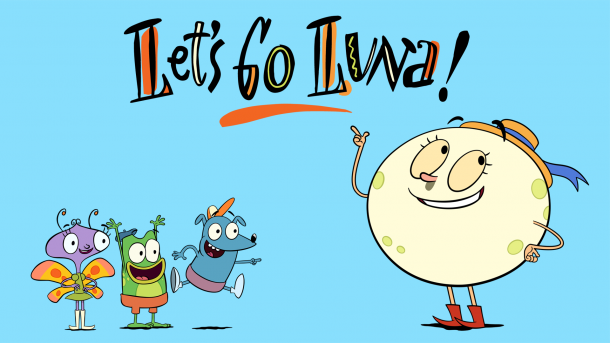
Let’s Go Luna! follows the adventures of three friends – Leo, a wombat from Australia; Carmen, a butterfly from Mexico; and Andy, a frog from the United States – as they traverse the globe with their parents’ traveling performance troupe, “Circo Fabuloso.” At each of the Circo’s stops, Luna the Moon guides the trio as they get to know the local region and its people. The group’s adventures take them through cities around the globe – from London to Cairo to Beijing – where they explore the food, music, art, architecture and other features that make each place distinctive. Episodes end with the kids back at the Circo Fabuloso and Luna back in the sky, with a reminder that there’s always more to see, learn and experience in every place they visit.
Plum Landing
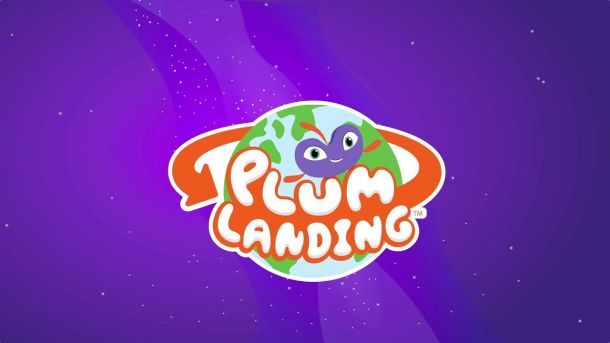
Plum landing follows the adventures of Plum, a video game designer from the desolate Planet Blorb, who longs to experience nature. To realize this goal, Plum commandeers a space ship, zooms down to earth, befriends five eager kids—Clem, Oliver, Gabi, Brad, and Cooper—and launches them on missions as diverse as “find a lake in the desert!” and “search for a cow that lives under water!” Zeroing in on four ecosystems—the Australian desert, the mangroves of Belize, the Canadian Rockies and the jungles of Borneo—Plum discovers many fascinating, puzzling and profound things about Earth and uses what she learns to create explorer games for 6- to 9-year olds.
Splash and Bubbles

Dive in and follow the adventures of Splash, a yellowback fusilier fish who has migrated all over the ocean before settling down in Reeftown! There he befriends Bubbles, a Mandarin dragonet whose vivid coloring matches her personality. Together, Splash, Bubbles and their friends explore the world’s undersea habitats, make new friends and learn about the many different ways life looks and lives in the ocean, celebrating the importance of diversity along the way.
Molly of Denali
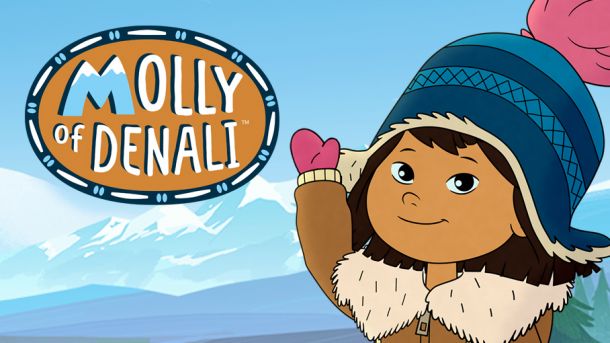
Get ready to sled into fun with Molly of Denali! Join Molly, an Alaska Native girl, her dog Suki, and friends Tooey and Trini on their adventures in epically beautiful Alaska. Along the way, Molly’s life is enhanced, kept on track, and flat-out saved by maps, guide books, websites, weather reports, and more.
Dinosaur Train

Dinosaur Train embraces and celebrates the fascination that preschoolers have with both dinosaurs and trains, while encouraging basic scientific thinking skills as the audience learns about life science, natural history and paleontology. Young viewers can join Buddy and his adoptive Pteranodon family on a whimsical voyage through prehistoric jungles, swamps, volcanoes and oceans, as they unearth basic concepts in life science, natural history and paleontology.
Nature Activities from PBS KIDS For Parents
Paint with Nature
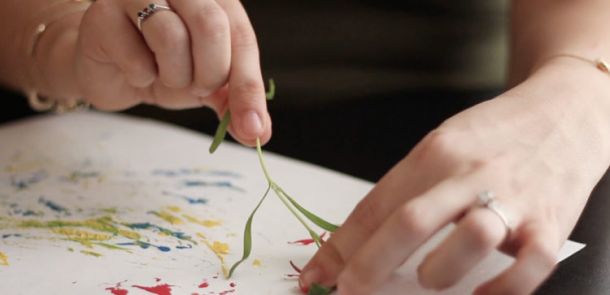
Get outside and have fun with nature, using natural objects (leaves, flowers, or anything else!) as brushes or stamps to paint creative art projects.
Make Nature Cat’s Hat
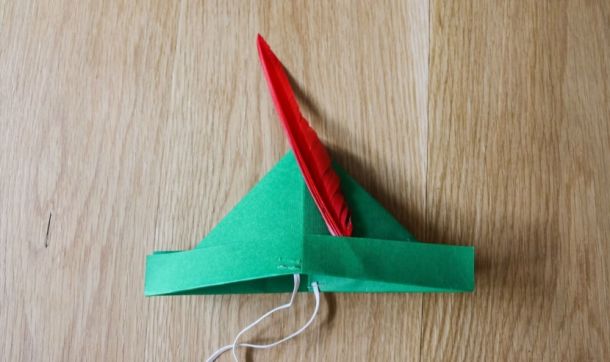
Create Nature Cat’s hat with paper in this cute craft activity.
Craft a Nature Dragonfly

Going on a nature walk is a great way to learn about the world. In this activity, you and your child will create beautiful dragonflies using a mix of objects you find on your nature walk.
Backyard Extraordinaire Explorer Kit
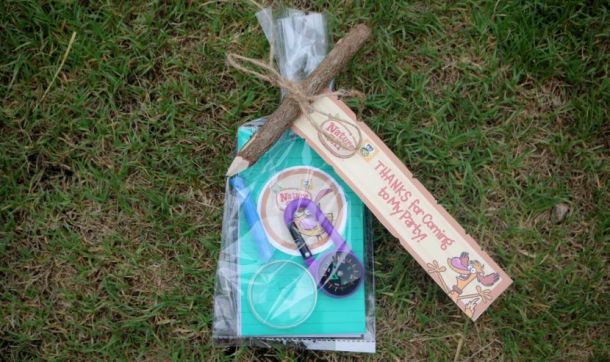
Create a fun kit for guests to continue their Nature Cat adventures at home.
Make a Match with Nature
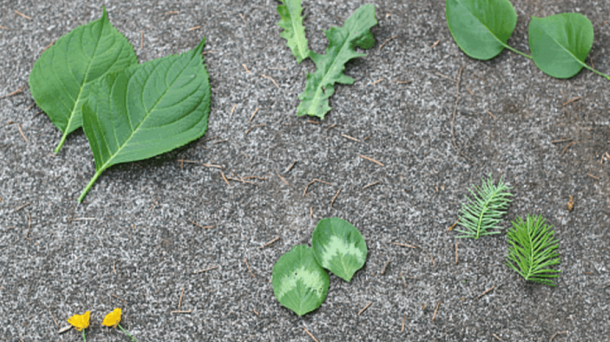
Matching up different pieces of nature will get your child to appreciate the big and little details of the world around them.
Smell Like a Honeybee

Help your child appreciate the special smelling talents of honeybees, while learning how “unbeelievably” important they are to the natural world!
Explore Nature on a Walk
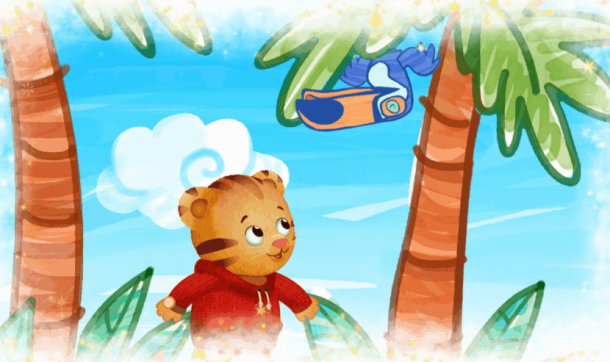
Children can find all kinds of treasures everywhere! Plan a walk with your child and maybe a friend, too. You may not get very far, or move very quickly, but children can have a chance to look for things like leaves, tiny bugs, stones, and squirrels.
Create Leaf and Bark Art
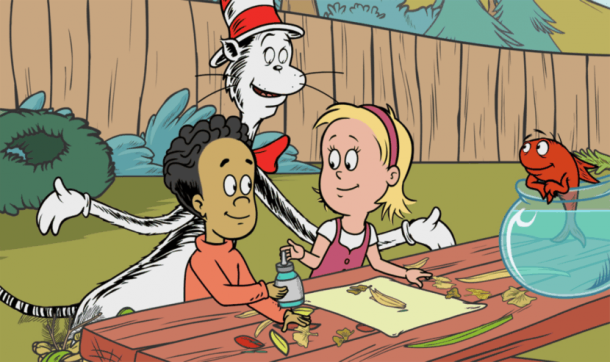
Encourage your child to see the trees in your backyard or neighborhood in a new way while creating beautiful, nature-inspired artworks.
Make Tracks

Using paint, crayons, or play dough, your child can make nature tracks to create an artistic masterpiece. Then ask your child to compare their tracks with friends, your pet, or one of the Nature Cat gang! How are the tracks similar or different? Use our directions below, or check out the PDF for more in-depth activities!
Nature Games from PBS KIDS For Parents
On the Farm
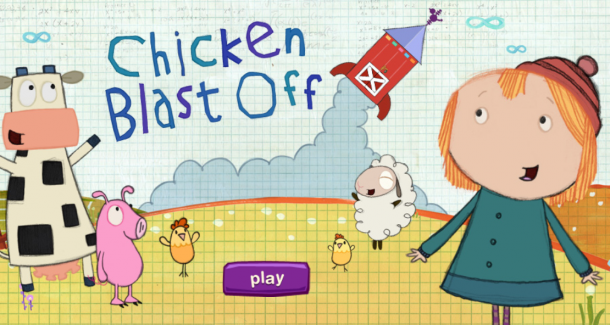
Help Peg build spaceships for all of the animals on the farm.
Jungle Rangers
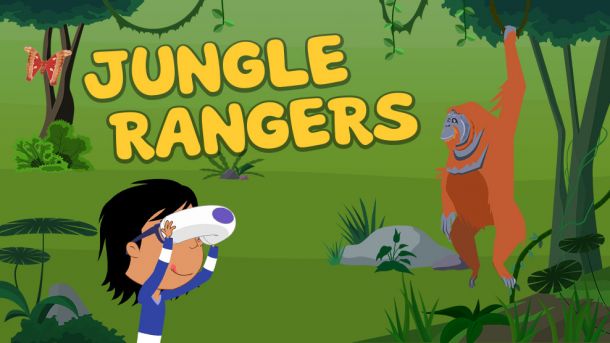
Take pictures of plants and animals that live in the Borneo Rainforest.
Reeftown Rock Adventures
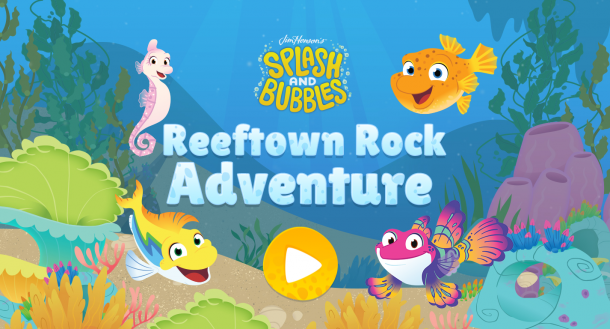
Go on an ocean adventure with Splash and Bubbles.
Seed Racer
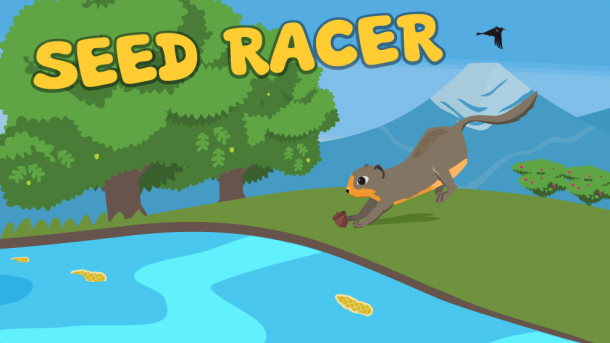
Collect seeds to keep the ecosystem healthy.
Finball Friends
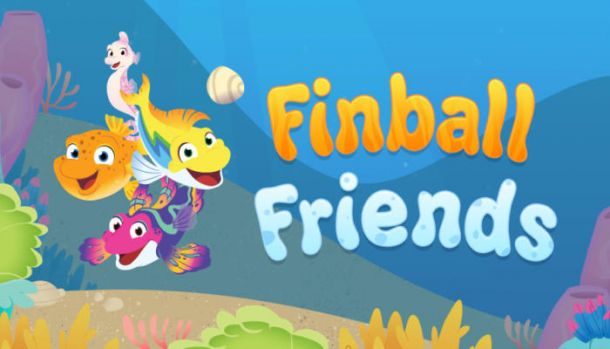
Work together to keep the pebble in the air. Option for 1 and 2 players.
Ocean Guide
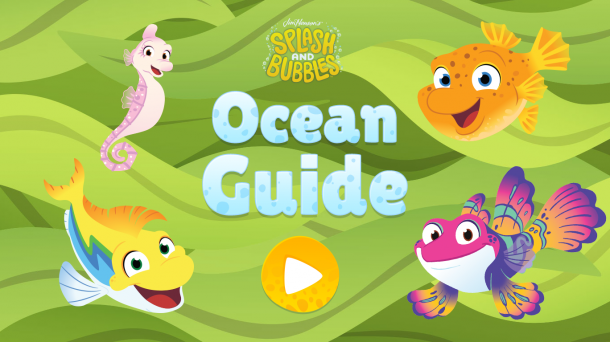
Tap on the plants and animals to learn more about ocean life.
Barnyard Match
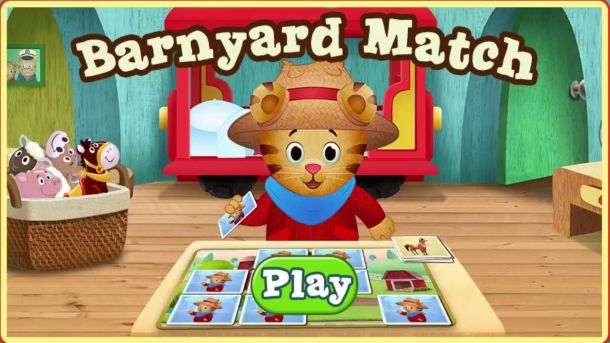
The classic memory game with Daniel Tiger.
More Nature Games
Teacher Resources and Lesson Plans
Discover clips, stories, lesson plans and more from PBS Learning Media and WNET Education:
Pre-K:
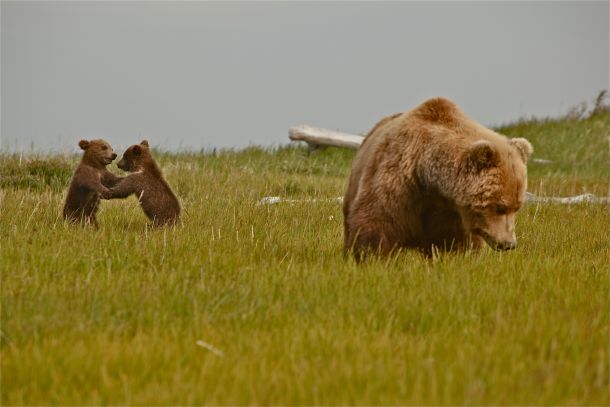
Find resources for early childhood lesson plans. Inspire your students with videos, games and activities aligned to state and national standards. Click HERE for content.
K- Grade 4:
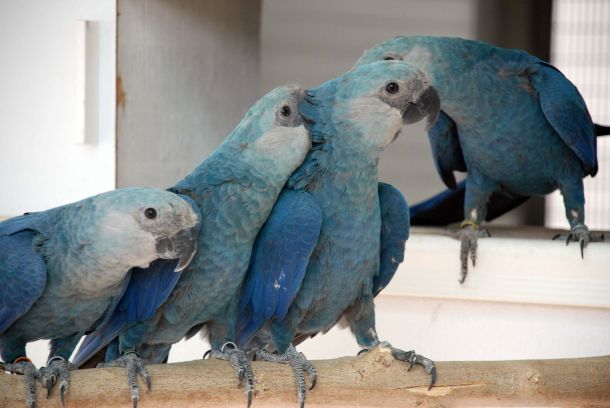
Find elementary resources and lessons. Inspire your students with videos, games and activities aligned to state and national standards. Click HERE for content.
Grades 5-8:

Find resources for middle school lesson plans. Inspire your students with videos, games and activities aligned to state and national standards. Click HERE for content.
Grades 9-12+:
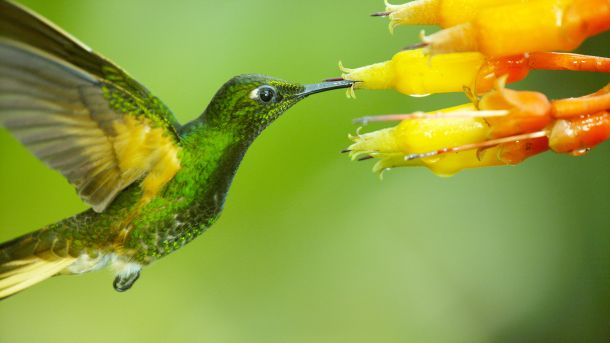
Find resources and activities for high school lesson plans. Inspire your students with videos, games and activities aligned to state and national standards. Click HERE for content.
All Ages:
PBS NATURE

This collection of science videos and media-enhanced lesson plans draws upon the powerful documentaries of public television’s award-winning natural history series, Nature. The video segments have been carefully selected to engage students with key curriculum concepts. The lesson plans incorporate hands-on activities, online resources, and video to interactively and creatively address topics and standards in Life Science/Living Environment and Earth Science.
Nature Cat Resources

Fred the house cat dreams of exploring the great outdoors. Once his family leaves for the day, Fred transforms into Nature Cat, “backyard explorer extraordinaire!” Enjoy looking through these clips, story segments, interactives, and readers as you do your own exploring with the Nature Cat crew!
Nature Works Everywhere Virtual Field Trips
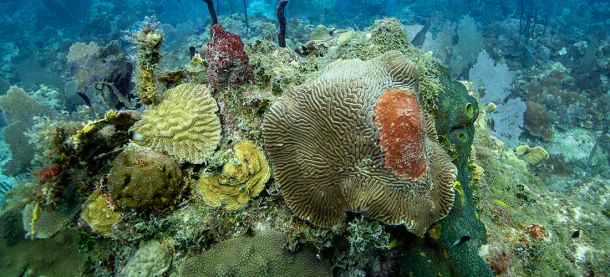
Explore the world from the comfort of your seat.
GPB Live Explorations
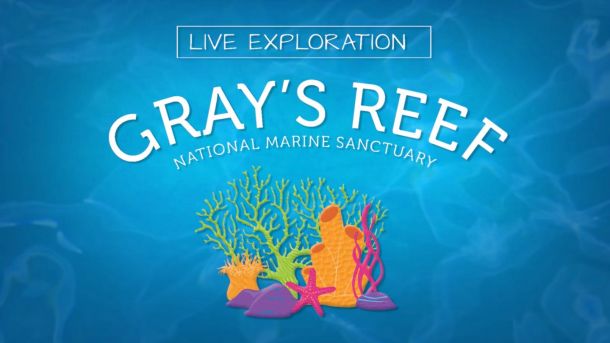
Georgia Public Broadcasting takes students on live virtual field trips from various locations around the state—no permission slip required! Witness the wonders of Georgia, hear from field experts, and participate in interactive program features.
Additional Resources
From our Partners at Explore.org
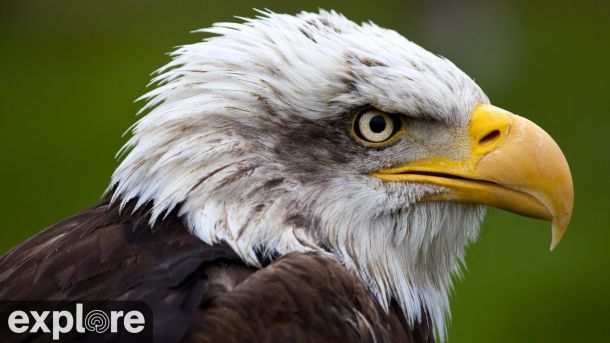
Explore.org resources for teachers.
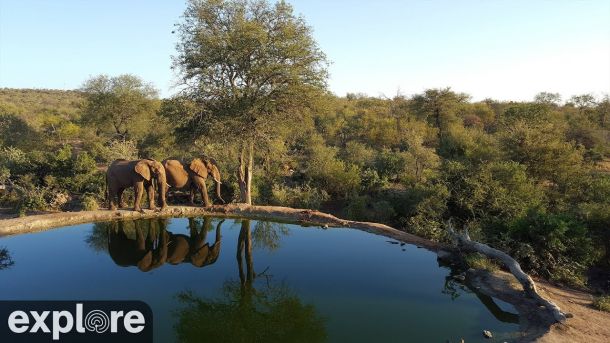
Explore.org’s YouTube page filled with live videos.
California Academy of Sciences

#MuseumFromHome and with Academy @ Home.
Discovery Magazine

STEM resources for at-home learning.
QuestaGame
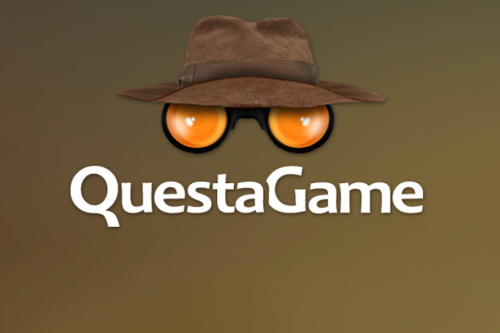
Enter your school to join the competition and study nature as a team.
MapWorks Learning: Assembly Point

A collaborative space for teachers to connect and share questions, resources and navigate the new space of online teaching.

